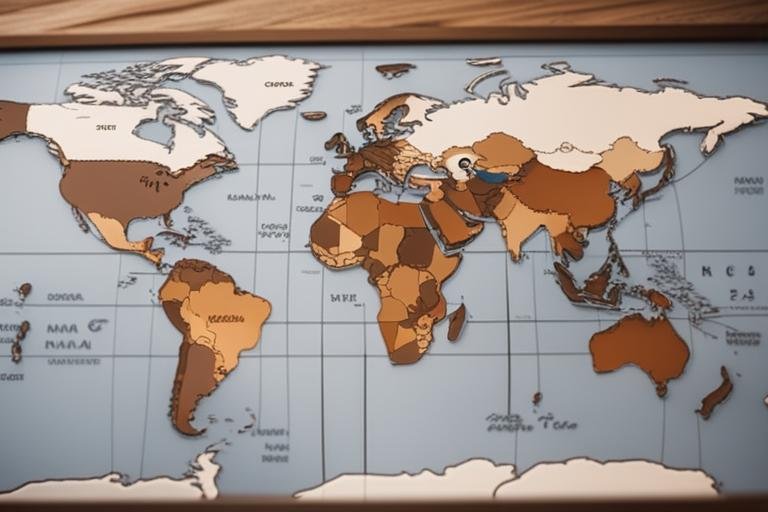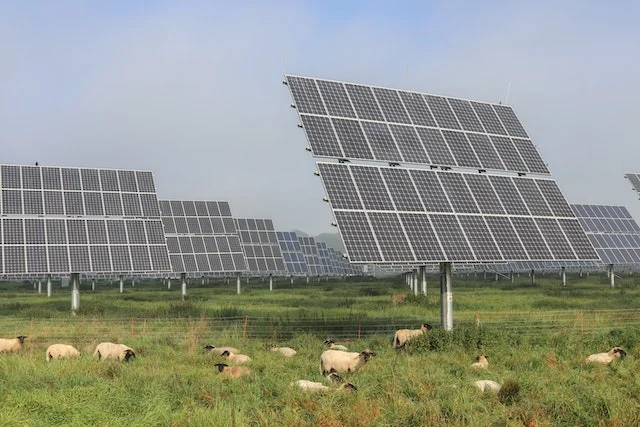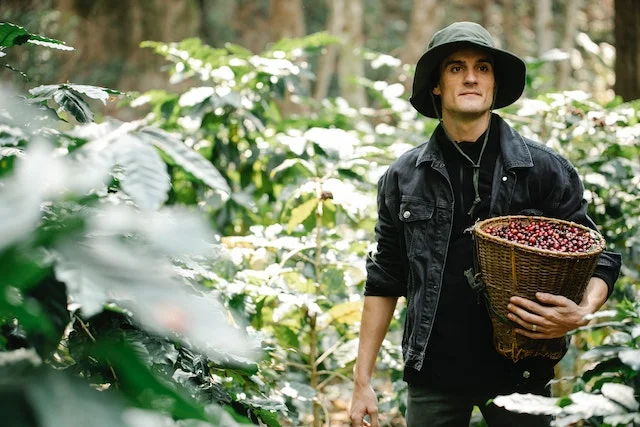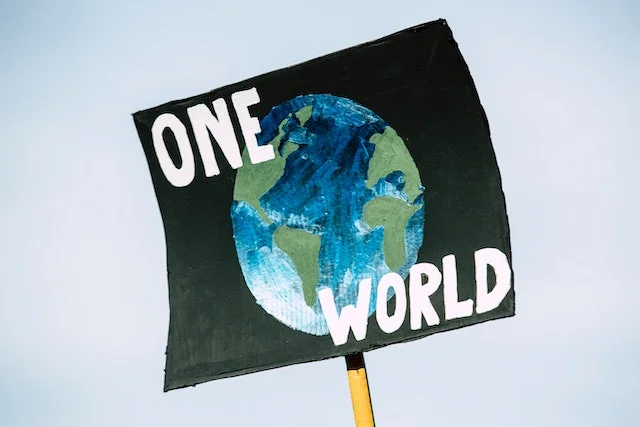The Sustainable Coffee and Climate Change Challenge
A steaming cup of coffee in the morning provides comfort, energy, and a ritual shared by billions worldwide. Coffee’s deep roots in cultures and communities are undeniable. However, the warming of our planet is now threatening the future of this beloved beverage.
Rising temperatures, chaotic weather, and rampant pests induced by climate change endanger coffee farming on a global scale. But by transitioning to sustainable practices, coffee producers can become stewards of the land while safeguarding their livelihoods. Protecting the farmers and tropical ecosystems that allow beloved beans to thrive will take dedication from all coffee sector stakeholders. But the future of sustainable coffee is bright.
Key Takeaways
- Climate Threat to Coffee: Climate change endangers coffee production globally, with rising temperatures and erratic weather patterns.
- Environmental Impact: Coffee farming harms ecosystems through water usage, deforestation, and chemical use.
- Sustainability is Vital: Transitioning to sustainable practices like organic farming is crucial to mitigate these environmental impacts.
- Collective Action Needed: Addressing coffee’s climate challenges requires collaboration among farmers, industry, governments, and nonprofits.

Understanding Coffee’s Environmental Impact
Coffee plants grow best in tropical climates along the Equator. Nations across Latin America, Africa, and Asia produce the vast majority of the world’s coffee, with Brazil, Vietnam, Colombia, and Indonesia leading the way. When responsibly managed, shaded plantations can harbor rich biodiversity, but rapid expansion has come at a cost.
A Thirsty Crop Draining Fresh Water Resources
- It takes approximately 140 liters of water to produce just 1 kg of coffee beans. With over 160 million 60kg bags produced annually, the fresh water used to grow coffee globally is immense.
- Wet processing methods for preparing the beans also use significant water. And contaminated wastewater from pulping and fermenting coffee can pollute rivers.
Deforestation Eliminating Wildlife Habitats
- The conversion of forests to coffee plantations has exacerbated deforestation. For example, between 1970 to 2010 Honduras lost over 40% of its forest cover as coffee farming expanded.
- This deforestation eliminates the diverse flora and fauna living within these forest ecosystems. Migratory birds, mammals like jaguars, and vulnerable species suffer habitat loss.

Agrochemicals Harming Ecosystems
- The heavy use of synthetic fertilizers and pesticides in conventional coffee growing has impacted surrounding ecosystems through chemical runoff and greenhouse gas emissions.
- Excess nitrogen and phosphorus from fertilizers disrupt aquatic ecosystems and contaminate drinking water supplies.
Climate Change Threats to Coffee Production
Experts predict that by 2050, over half of the land currently used to grow coffee could become unsuitable due to climate change. Farmers are already facing the impacts of rising temperatures and chaotic weather.
Changing Rainfall Patterns and Lengthening Dry Spells
- Longer and more severe droughts have damaged crops and limited coffee cherry growth in Central America, Brazil, and East Africa. Excessive rainfall and flooding also harm harvests.
- Shifting weather patterns make it difficult for farmers to know when to plant, fertilize, and irrigate. Unpredictable conditions lead to lower yields.
Rising Temperatures Spreading Pests and Disease
- Warmer weather enables damaging coffee pests like the coffee berry borer beetle to multiply faster and spread to new regions, including higher elevations.
- Fungal diseases like coffee leaf rust thrive in warmer, wetter conditions. Rust has caused losses exceeding 1% of production in some Latin American countries.

Need to Move Plantations to Higher Elevations
- As temperatures rise, Arabica coffee can only thrive at higher, cooler elevations with slight temperature fluctuations year-round.
- But the limited land available at higher altitudes restricts future production potential. Rising temperatures could severely reduce yields.
Keys to Sustainable Coffee Farming
Sustainable coffee farming upholds environmental health, social equity, and economic viability. Through holistic stewardship, coffee agriculture can be part of the climate solution.
Organic Practices Build Soil Health
- Instead of synthetic fertilizers and pesticides, organic coffee farming uses compost, mulch, and cover crops to nourish soil. Diverse shade trees and birds help control pests.
- While organic methods sustain ecosystems and protect biodiversity, yields are typically lower. Smallholder farmers also face high costs of organic certification.
Agroforestry Benefits Farmers and Ecosystems
- Agroforestry intersperses coffee shrubs with banana trees, timber trees, fruit trees, and native shade trees. This diversification provides income stability.
- Shade coffee plantations can match conventional yield potentials with proper density and pruning. The canopy shade also buffers crops against extreme weather.
- Trees prevent soil erosion while providing critical habitat for birds and wildlife. Farmers must carefully manage shade levels and prune regularly.

Sustainable Processing Reduces Water Use
- Methods like natural honey processing, pulping natural coffee, and dry fermentation decrease water needs by up to 50%.
- Water usage is further reduced by recycling, drip irrigation, and planting vegetative cover to retain soil moisture.
- However, smallholder farmers often cannot afford the capital investments required to build sustainable wet mills.
Fair Trade Levels the Playing Field
- Fair Trade guarantees a minimum price per pound that covers the average costs of sustainable production.
- By working together in certified cooperatives, small-scale farmers can access credit, training, and direct trade opportunities that were previously out of reach.
Harnessing Technology for Sustainable Coffee
Emerging technologies provide data to help coffee farmers use resources efficiently while making sustainability completely transparent.

Remote Sensing Informs Smart Farm Management
- Drones and satellite imagery enable detailed crop monitoring to identify growth variations and problems.
- Geo-referenced soil sensors allow farmers to tailor irrigation, fertilizer, and remediation efforts to different zones within a plantation.
Blockchain Provides Supply Chain Transparency
- Recording transactions in a digital distributed ledger tracks coffee from origin farm through roasting, creating an immutable record.
- This allows brands to validate sustainability certifications and enables consumers to pinpoint the exact source of their coffee.
Big Data Analytics for Climate Resilience
- Machine learning combines data like weather forecasts, leaf wetness sensors, and soil moisture levels to predict disease outbreaks, determine optimal harvest times, and guide climate adaptation.
Collective Action is Key

Partnerships between farmers, industry, governments, certifying agencies, and non-profits create shared value.
- Starbucks and Conservation International work with farmers in Mexico and El Salvador to plant one million climate-resistant coffee trees.
- TechnoServe helps coffee growers secure financing to renovate their farms and adopt sustainable practices.
- The Initiative for Coffee & Climate provides agronomic resources to promote soil health, water conservation, and reduced emissions.
- World Coffee Research breeds new hybrid varieties resistant to climate threats like drought and disease. These are shared with farmers.
- Consumers can directly support sustainability by purchasing certified coffees. Journaling the coffee’s journey from origin enhances our appreciation.
The Future of Coffee Hangs in the Balance
Climate change brings uncertainties, but with care and cooperation, a vibrant future for sustainable coffee remains achievable.
- If deforestation continues unchecked, short-term gains will sacrifice coffee’s long-term viability. Habitat loss must be halted.
- Prolonged droughts, unusual weather patterns, and climbing temperatures will constrain yields in coming decades. The livelihoods of smallholder farmers also hang in the balance.
- However, the testing and scaling up of new climate-resilient coffee varieties offers promise. As does climate-smart agricultural training for farmers.
- With ongoing investment, stakeholder collaboration, and favorable public policies, the transition to sustainable coffee production can safeguard farmers and ecosystems for generations to come.
The future depends on each of us – from growers innovating new practices to companies integrating sustainability to consumers choosing eco-conscious coffee. United by our affection for the beauty of coffee, we can come together to craft a sustainable future for all who depend on it.

Innovative Farming Practices
Sustainable coffee farming requires constant innovation and the adoption of cutting-edge techniques. Here are some promising practices gaining traction:
Intercropping for Income Diversification
- Farmers intersperse coffee shrubs with other cash crops like pepper, vanilla, turmeric, ginger, and bee-friendly flowering trees.
- Diversification provides financial stability, allowing farmers to remain in coffee farming despite price fluctuations.
Precision Irrigation and Moisture Management
- Drip irrigation, moisture probes, and hydroponic techniques curb water usage while enhancing nutrient delivery to plant roots.
- Rainwater harvesting in tanks during the wet season also provides irrigation reserves during dry periods.
Composting and Vermicomposting
- Composted organic matter boosts soil health, moisture retention, and nutrient availability for plants.
- Vermicompost harnesses earthworms to rapidly breakdown pulp, mucilage, and other byproducts into beneficial biofertilizers.
Sustainable Coffee Initiatives
Partnerships on sustainability initiatives bring together farmers, corporations, governments, and NGOs to transform the coffee sector.

International Institute of Tropical Agriculture (IITA)
- Nonprofit providing agronomic training and disseminating disease-resistant coffee seedlings to smallholder farmers across Africa.
Global Coffee Platform
- Brings together industry stakeholders to align around sustainability priorities and collectively fund initiatives.
Sustainable Coffee Challenge
- Seeks to make coffee the world’s first sustainable agricultural product, with targets like making all coffee sustainable by 2030.
Hanns R. Neumann Stiftung
- nonprofit founded by a coffee company providing training in sustainable farming methods to producers worldwide.
Challenges and Future Outlook
Progress has been made, but work remains to overcome the hurdles facing sustainable coffee.

Remaining Barriers
- Lack of financing for smallholders to implement sustainable farm upgrades
- Lose standards and inconsistent verification among some certifiers
- Minimal government extension services in developing nations
- Low consumer demand for sustainable coffee in many markets
Potential Future Scenarios
- Climate-driven changes in suitable growing regions displace farmers and production
- Technologies like blockchain and precision agriculture increase transparency and efficiency
- Proliferation of hybrid coffee breeds enhances climate resilience
- Carbon farming methodologies incentivize coffee’s role in sequestering carbon
- Rise in corporate-owned mega-plantations squeezes out smallholder farmers
But with care, innovation, and cooperation, coffee’s sustainable future looks bright.

Conclusion
Coffee connects people worldwide through shared passion for the comforting morning ritual. But the future of the families and ecosystems that produce our coffee hangs in the balance as the climate shifts. Sustainability will take dedication from all coffee sector stakeholders. But the future of sustainable coffee is achievable if we come together united by affection for the beans we so lovingly brew.
The Path to Sustainable Coffee
| Key Issue | Unsustainable Practices | Sustainable Solutions |
| Deforestation | Forest conversion to coffee plantations | Agroforestry systems |
| Soil Health | Overuse of synthetic chemicals | Organic composting methods |
| Water Usage | Wasteful practices in farming and processing | Recycling, efficient processing |
| Farm Livelihoods | Unfair compensation | Fair Trade minimum pricing |
| Climate Resilience | Old coffee varieties vulnerable to warming | New hybrid disease/drought resistant breeds |








